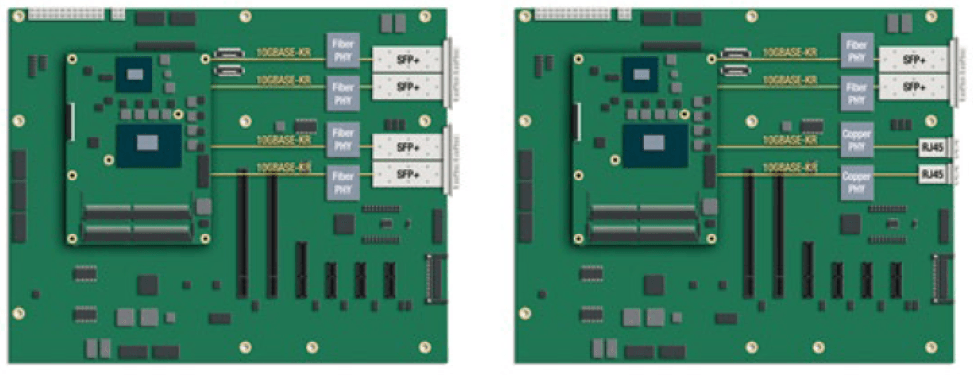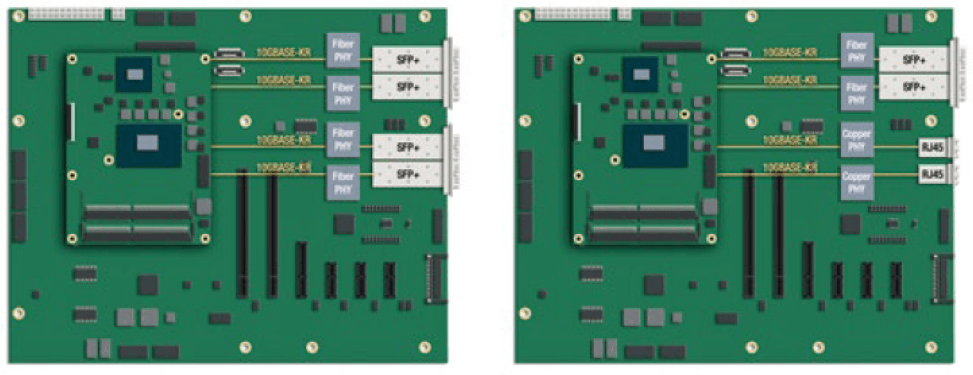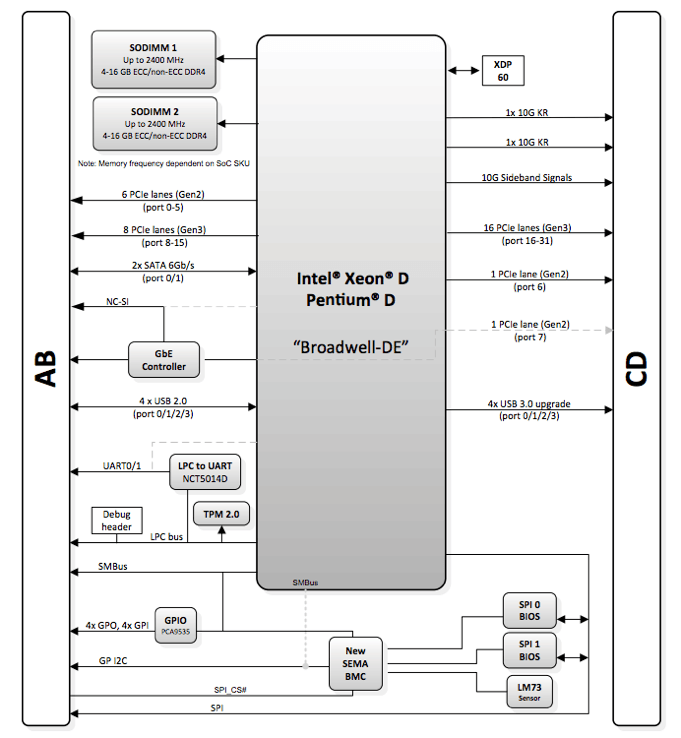COM Express Type 7 Module Solve Complex IoT Edge Node Processing Matrix
PATRICK MANNION
The new Type 7 pin in the COM Express 3.0 specification provides an important option for developers designing headless servers. Among other changes, this pin removes the display and audio interfaces to support four 10GbE ports — making Type 7 ideal for server module (SoM) designs.
Module vendors have provided up to 16 core server-class modules on new pins. These modules will help bridge the gap in the fog computing architecture that is pushing more and more processing to the edge. By filling more small-footprint modules with more computing power, these Type 7 boards will support high-performance and high-bandwidth edge nodes.
More flexible modules
Type 7 is not intended to replace Type 6, but it is a complementary pin that is tailored for headless, high-bandwidth edge nodes (Figure 1). For this purpose, the new standard removes the display and audio interfaces and organizes the USB 2.0, SATA, and ExpressCard interfaces. This releases 102 pins, making room for four 10GbE ports and a total of 32 PCI Express channels.

Figure 1. The Type 7 pin is complementary to the Type 6 and Type 10 pins
The Type 7 specification also adds a Network Controller Sideband Interface (NC-SI). NC-SI defines the connection of the baseband management controller (BMC) to achieve out-of-band remote manageability, all of which are implemented on carrier-grade boards. Type 7 is backward compatible with Type 6, which can be plugged into the Type 6 carrier board and use legacy I/O.
The end result is a highly flexible COM Express module that can integrate 10 such modules into a 1U chassis with a combined maximum transfer rate of 0.4 terabits per second.
Carrier Ethernet
The Type 7 10GbE interface is implemented through four 10GbE-KR backplane channels, and a physical 10GbE interface is physically implemented on the carrier-class board (Figure 2). This is used for high-speed communications while giving developers the option of using either of the following methods for the final interface:
Two 10GBASE-KRs Connected to Two RJ45s via Copper Physical Layer (PHY)
Four 10GBASE-KRs connected to four RJ45s via copper PHY
Four 10GBASE-KRs Connected to Four SFP+s via Fiber Optic PHYs
Four 10GBASE-KRs connected to SFP+/RJ45 via fiber PHY/copper PHY


Figure 2. COM Express 3.0 Type 7 allows 10GbE to be implemented in various ways on the carrier board
Early modules have high performance
The module is processor-independent, but some module vendors already offer advanced SoC-based modules designed for intensive, low power, and highly optimized processing at the network edge.
Express-BD7 is such a module. This module uses COM Express basic form (95 x 125 centimeters), this module is based on Intel® Xeon® D series processor with 4, 8, 12, or 16 cores or Intel® Pentium® D SoC, with 1867 A combination of 32 GB dual channel DDR4 ECC memory running at 2133/2400 MHz (Figure 3).
The module supports two of the possible four 10GbE ports, as well as GbE, NC-SI, 2 SATA ports running at 6 Gb/s, 4 USB 3.0/2.0 ports and up to 32 PCIe channels ( 24 Gen 3, 8 Gen 2). The module supports Intelligent Embedded Management Agent (SEMA) functionality, which can operate in the temperature range of -40 ÌŠC to +85 ÌŠC. SEMA features include voltage/current monitoring and power-up sequence debugging support.

Figure 3. Functional block diagram of Express-BD7. Two 10GbE ports (1x 10G KR) are shown in the upper right. The GbE controller connected to NC-SI is shown in the middle of the left. It also has a distribution between the AB and CD interfaces. 32 PCIe channels
Dense virtualization that can be deployed anywhere on the edge or when needed
The Express-BD7 supports Intel Xeon and Pentium processors with up to 16 cores. There are 10 modules in a 1U rack server, which is simply 160 cores or may be virtual machines that can be deployed anywhere from the edge to the data center. For industrial applications, for example, a large cached local virtualization system can be used to acquire sensors and measurement data in real time, or to quickly transcode and process data-intensive video streams as needed: only more cores need to be used. It is also possible to use computational power for deep packet inspections to ensure security and service quality.
These are just some of the applications implemented through the emerging COM Express Type 7 module category, all of which are implemented through a combination of optimized, low-power processing and high-speed communications.
BLPS laser safety protective device is designed for personal safety used on hydraulic bender.
The dynamic test technology it used has passed the Type 4 functional safety assessment by TUV, and get the national invention patent. The product reaches the advanced technological level of similar products.
BLPS laser safety device provides protection zone near the die tip of the bender to protect fingers and arms of the operator in close to the upper mold die tip. It is the most effective solution so far to preserves the safety and productivity of the bender.
Press Brake Protection,Laser Guarding Device,Press Brake Guarding Systems,Press Brake Guarding
Jining KeLi Photoelectronic Industrial Co.,Ltd , https://www.sdkelien.com